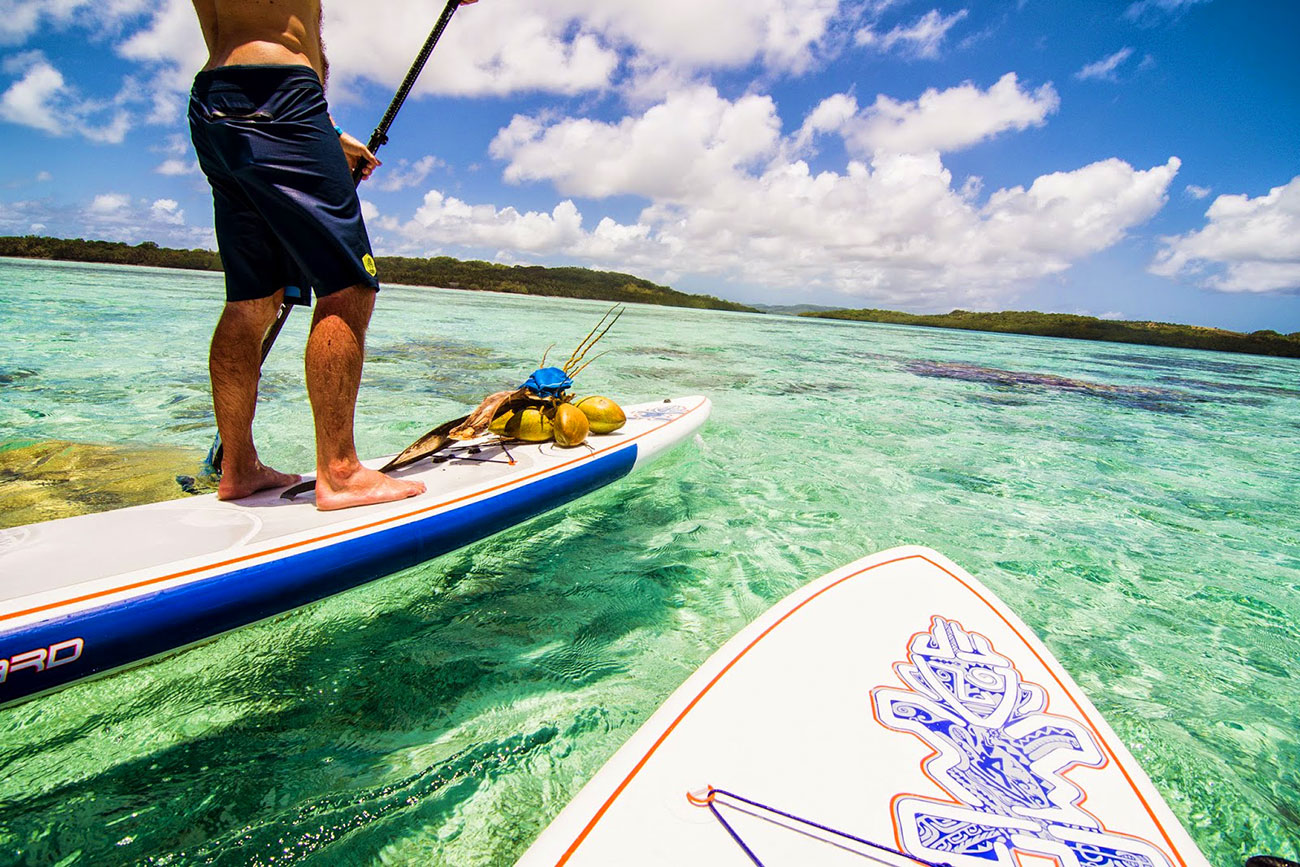
Bart de Zwart’s Epic Round-The-World Odyssey (Part I)
Is it just me, or is Bart de Zwart one of the most inspiring guys in the world?
Bart is currently on a round-the-world trip with photographer Franz Orsi, visiting and paddling in some of the most remote destinations on earth. The world tour includes stops in Micronesia, Nepal, India, Ethiopia, Istanbul, and finally to Mexico, where Bart will meet up with the rest of the paddling world (and compete) at the ISA World Champs.
Bart and Franz will be traveling with a couple of Starboard inflatables, which will come in handy considering this journey contains 17 separate flights.
Earlier this week, the pair spent a few days in remote Micronesia, before flying off to Kathmandu, Nepal to continue the odyssey.
Here’s a preview clip released before the trip, and below that is a fresh dispatch from Bart after their first stop. This is a repost from Bart’s excellent “SUP Crossing” blog, where you can get more regular updates from the adventure.
“Grass Skirts, Stone Money, and Western Influences”
After our first adventure with inflatables back in 2013, where we traveled around Europe by train, we wanted to take it one step further and explore far away places in the world. This time we bought a round the world ticket with stopovers on all continents.
Our first destination was the Pacific island of Yap. This tiny island belongs to one of the 186 islands of Micronesia and is known for its traditional culture. Yap is one of the last islands in the Pacific that still resists Western ways.
At the airport we are welcomed by two bare-chested women in grass skirts who hang leis around our necks. With only two planes a week arriving in Yap, it is not a busy airport.
We get a ride from a policeman to a small piece of land in the middle of town where we inflate our tent for the first night (yes, we also have an inflatable tent).
In the next days we travel to the North of the island, to a village, Wanead, where we ask permission to put up our tent. On Yap the land is owned by the people: You always have to ask permission to use the land or visit certain villages. As soon as we had made camp, we inflate our boards and paddle for hours along the coast.
Yap has a lush green interior full of palm and betel nut trees. The coast is mostly covered with mangroves and around the whole island is a protective reef where you can find manta rays up to 20 feet wide. This island is one big oasis with only 10,000 inhabitants and no industries.
The pace is slow on the island. Partly because there is not much to do other than fish and find food, partly also because almost everyone is chewing betel nuts, a subtle narcotic which produces orange stained teeth and lips. The Yapese do this all day, every day.
When we paddle here, we see the huts at the beach and the seaworthy outrigger canoes that, until very recently, the locals used to sail to the outer islands and on to Guam or Palau, often spending 7-10 days at sea and relying only on the stars for navigation.
One day we paddle to Rumung, a tiny island off the northern tip of Yap. We go with special permission and with a local inhabitant of Rumung – without him no one can enter this island.
It is there that we see the biggest “stone money” in all of Yap. Stone money is a form of currency made out of a giant round carved stone with a hole in the middle. This stone money was once the only form of payment, now it is still in use today for certain transactions or for settling disputes.
There is a lot more to say about this little paradise in the Pacific which we will save for later. Now we are on our way to Kathmandu, Nepal where the story continues…
Follow more of the adventure on Bart’s SUP Crossing blog
All photos copyright Franz Orsi



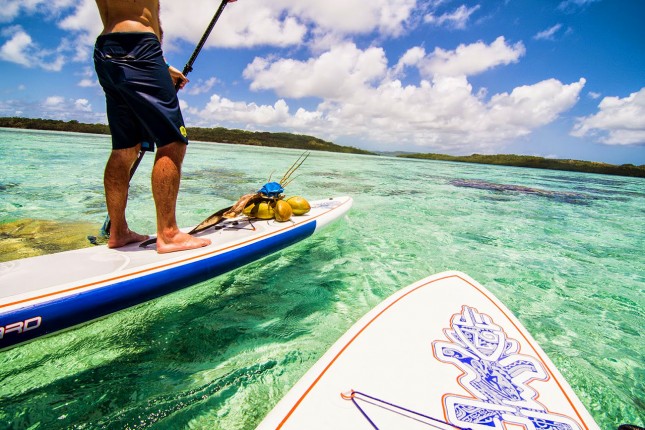
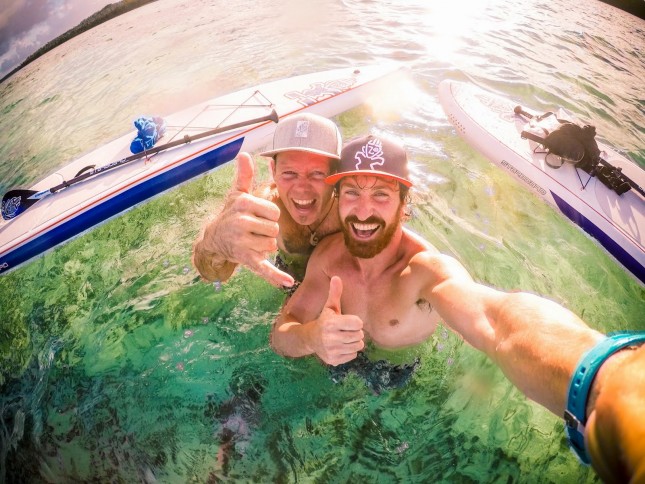
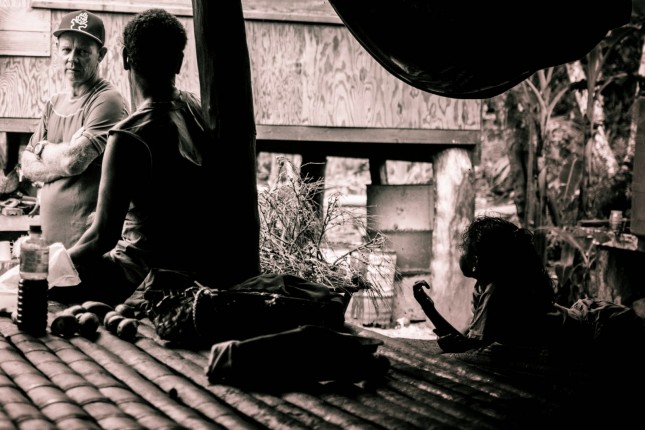
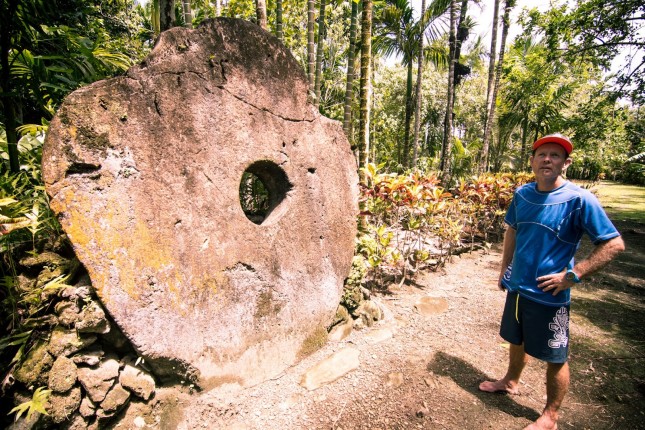
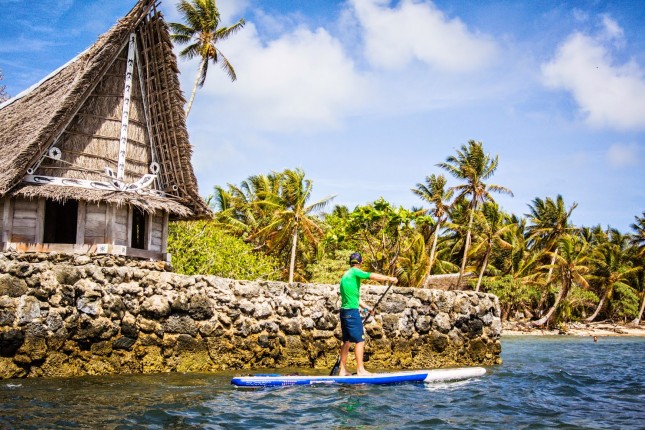

You must be logged in to post a comment.